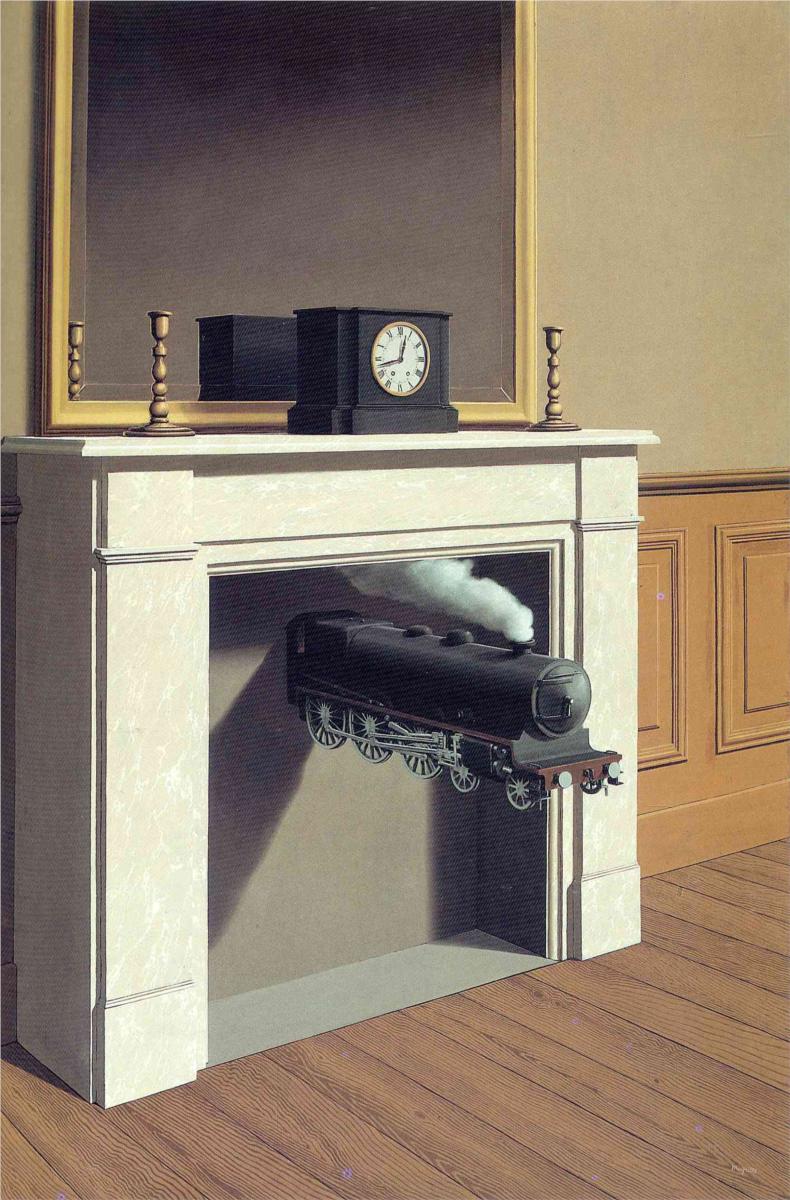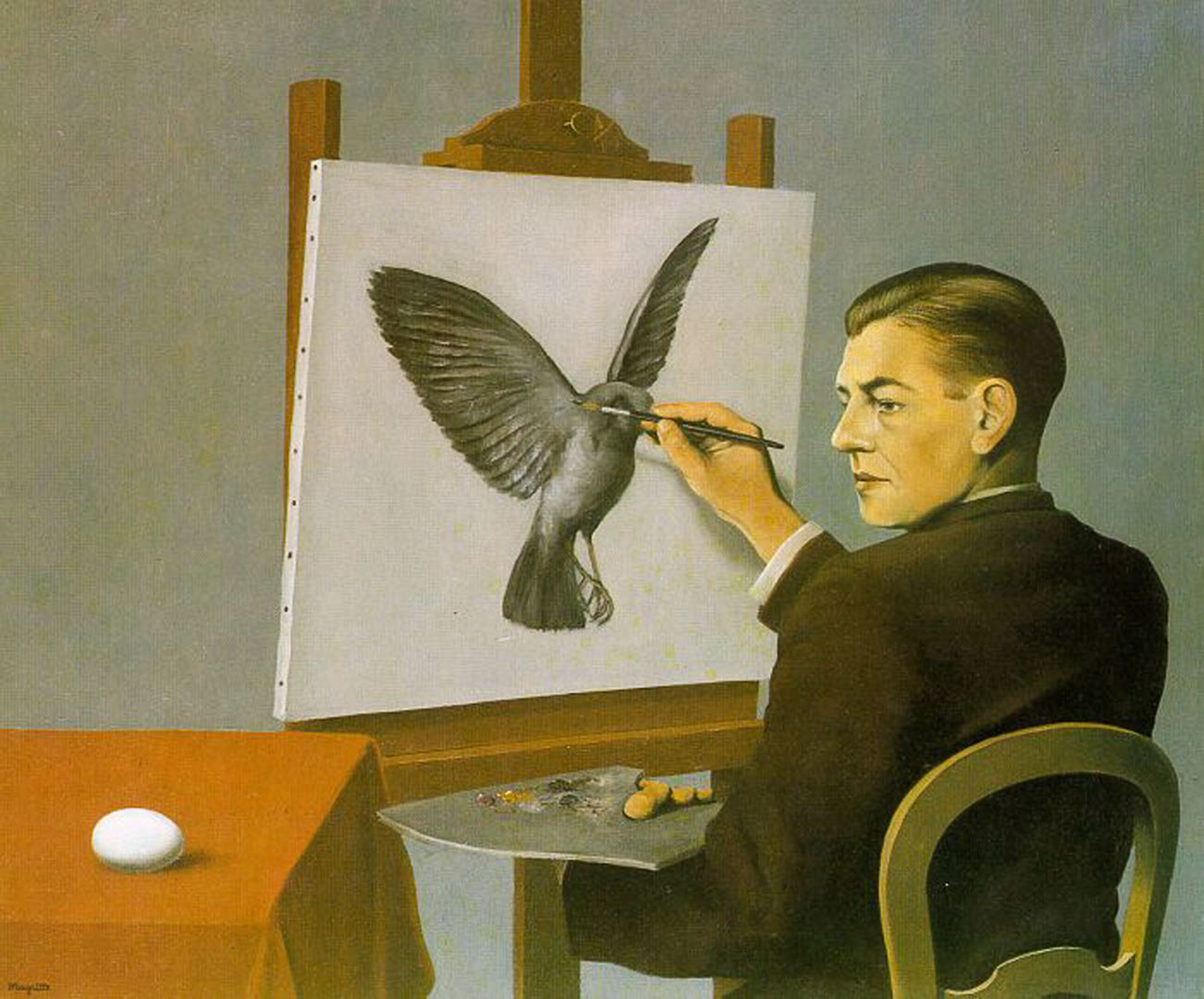The painting was one of many done for surrealist patron and Magritte supporter Edward James. This was the second painting delivered to James for his London ballroom. The first was the portrait of James, Not to be Reproduced (it was already published in DailyArt). In a letter of 1959, Magritte commented at length on this painting, emphasizing that his goal was to unveil or evoke "the mystery" of things "that seem familiar to us [out of error or habit]." Having decided on a locomotive as his subject, "the problem," he explained, was "how to paint this image so that it would evoke mystery." Magritte added, "The image of a locomotive is immediately familiar: its mystery is not perceived. In order for its mystery to be evoked, another immediately familiar image without mystery—the image of a dining room fireplace—was joined with the image of the locomotive." He also remarked that "the title La durée poignardée is itself an image (in words) joined to a painted image" and that Time Transfixed did not seem to him "a very accurate translation." Indeed, although the English title has the memorable quality that Magritte often sought, it is both more catchy and less forceful than the original French. It does not convey the sense of duration and passage through time in the word "durée" (duration) or the violent impact of something stabbed with a dagger in the word "poignardée" (stabbed).




Time Transfixed
oil on canvas • 147 cm × 98.7 cm
 René Magritte
René Magritte